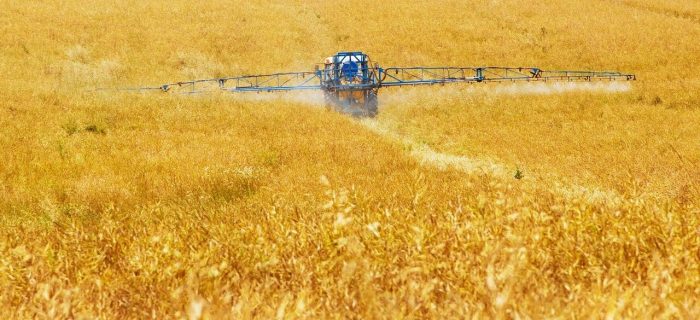Agroecology and Industrial Farming: Leveling the Playing Field
You can view and comment on this article via the Huffington Post here.
Driving across the United States, the landscape of genetically modified corn stretches for hundreds of miles. Same crop, same variety, same methods, even the same seed company dominates the heartland—visual proof of the dominance of industrial agriculture. (Most of this vast sea of corn is used for animal feed or ethanol production rather than for human consumption…)
The same lack of biological diversity can be found in the industrial tomato fields of Florida, the vegetable fields of California and the cotton fields of the southern United States, with soy, rice, wheat and livestock also following the same pattern.
The negative consequences of industrial agriculture—from climate change to antibiotic-resistant bacteria—have been extensively documented. Agroecology, the “cleaner and greener” alternative to industrial agriculture, has also been extensively documented. Contrary to popular belief (and to a lot of industrial propaganda) agroecological methods can be just as productive as industrial methods.
While a few techniques have crossed the agroecological-industrial divide, they rarely challenge the monoculture mantra. Most large-scale farmers in the United States are locked-in to the markets of industrial agriculture and are reluctant to make sweeping changes to their farming system.
Over the last century chemicals and big machinery have replaced millions of workers. It’s capital intensive, though. Farming is a multi-million-dollar proposition—and a marketer’s dream.
Because all these inputs lead to chronic crises of overproduction and falling farm gate prices, farmers typically increase production and acreage to make ends meet. They take out more loans and buy more chemical inputs and more patented seed, which keeps the inputs industry very happy. But these farmers don’t just consume more inputs; they ultimately consume smaller neighboring farms too, growing the scale of their operations in order to maximize slim profit margins. Industrial agriculture is tailored to the needs of a capitalist marketplace – it overproduces vast amounts of food, feed and fuel and consumes vast amounts of commoditized inputs. This doesn’t necessarily help farmers, who, like many poor countries, produce cheap raw materials but consume expensive industrial goods. The wealth of our powerful industrial agricultural system ultimately accumulates capital in the hands of the input, grain and retail monopolies.
Stay in the loop with Food First!
Get our independent analysis, research, and other publications you care about to your inbox for free!
Sign up today!Agroecology isn’t compatible with this system. First off, agroecology, with its diversified cropping systems and labor-intensive fertility and pest management practices requires specialized, place-specific knowledge and skilled labor—and lots of it. While this can produce plenty of food and jobs, it can’t be scaled up to the massive farm size the monopolies demand. And even though agroecology does not result in the soil erosion, groundwater contamination, greenhouse gases and pesticide poisoning typical of industrial agriculture, neither the benefits, nor the costs of the environmental “externalities” are recognized in the marketplace. Agroecology gives us its environmental benefits for free, while industrial agriculture makes us pay for its environmental damage. How?
Industrial agriculture systems don’t pay for farmworkers’ illnesses after prolonged exposure to pesticides. It doesn’t pay for the dead zone in the Gulf of Mexico. It doesn’t pay for the loss of biodiversity, the runoff into our drinking water, or the decimation of rural communities and their social services. Industrial agriculture is a façade of economic efficiency – and we all pay the price.
Nevertheless, industrial agriculture thrives because it is compatible with existing social, political, and financial systems. It has what agricultural sociologists call “thick legitimacy“ i.e., everything about the system legitimizes the practice—no matter how destructive. The consolidated wealth of the input and retail sectors do not account for real costs of production, which is precisely why industrial agriculture thrives.
For agroecology to have a fair chance to “compete” with industrial agriculture we have to level the playing field by internalizing the true costs of industrial agriculture—that is, by making polluters pay.
But how do we do this without penalizing the farmer and making sure those pushing the poisons and the overproduction (the monopolies) are the ones paying? It starts with making them pay a fair price to the farmer for the product. It also means something called “supply management” to prevent overproduction. George Naylor, a corn and soy farmer from Churdan, Iowa calls for a “quota system”:
Under the current laissez-faire policy of planting fencerow-to-fencerow, a farmer is always going to try to produce more bushels to sell either out of greed or fear of going broke. If a chemical input can seemingly increase income over the cost, it makes sense to use it. But when all farmers follow suit, overproduction results in low prices and our land and water are degraded. Instead, let’s say that each farm had a quota based on history of production and an assessment of how a good crop rotation along with conservation plantings could regenerate the soil and biodiversity. If the farmer is compensated with a price that will stabilize his or her income, their thinking and practices will be just the opposite of the laissez-faire, free market straight jacket. If a farm has a quota of 10,000 bushels of corn, that farmer will think, “How can I produce 10,000 bushels of corn with the least amount of chemicals and fertilizer and the most amount of conservation? Maybe I could use some of the other land for soil saving hay and pasture to feed a new herd for grass fed beef or dairy.” That farmer would be well on the way of becoming organic.
It would also help level the playing field between agroecology and sustainable agriculture.


 Help Food First to continue growing an informed, transformative, and flourishing food movement.
Help Food First to continue growing an informed, transformative, and flourishing food movement.




